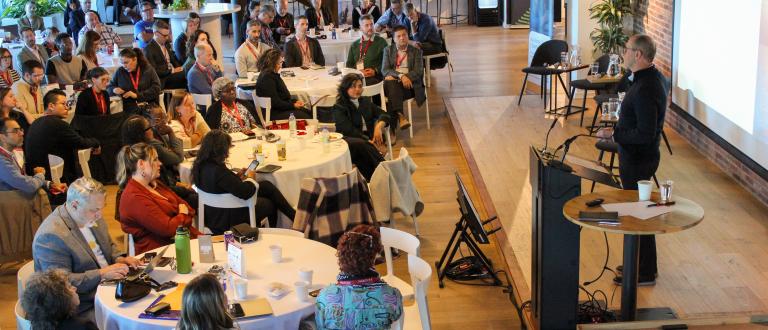Though we don’t know exactly when, there will be a federal election on or before October 20, 2025. If your nonprofit does policy and advocacy work at the national level, you’re probably thinking about how to get your issues on the radar of political parties and the general public during the election. While there are many factors that contribute to advocacy success, from relationship building to having solid evidence, communicating your recommendations effectively is key. Framing your ask in a way that is compelling and tailored to the appropriate audience and context will help your advocacy get noticed.
We reached out to policy experts across the nonprofit sector to get their insights into how to craft clear, compelling and relevant advocacy messaging that gets results.
How can you frame your policy recommendations for elected officials (or candidates)?
Federal elections are significant moments in Canadian politics with major long-term impacts, which means that there is a lot of competition for attention during a relatively short period of time. During these periods, elected officials and candidates are very focused on campaigning. Rabia Khedr, National Director of Disability Without Poverty notes that “in an election year, political hopefuls who are running to keep their seats are only interested in constituents, donors and any media attention they can garner. It is essential to give them stories, statistics, and any other key messages that click with their desire to secure votes."
Anjum Sultana, Director of Youth Leadership & Policy Advocacy at Plan International Canada, points to the importance of connecting your policy priorities with the large national issues that are top-of-mind for elected officials. She tells us that she “frames policy recommendations showing the linkages to how they may contribute to addressing pressing societal priorities such as economic productivity, equality and inclusion, and broader health and wellbeing.” Anjum also notes that she has “seen the greatest traction when grounding policy recommendations in areas where we have deep programmatic expertise as an organization or as part of a wider network.” Remember - you have gained knowledge through the work that you do, so make good use of it in your policy work.
How can you make sure your messaging will be compelling for bureaucrats?
Bureaucrats are often behind the scenes and may appear to have less authority than elected officials, but their power isn’t to be underestimated when you’re trying to move a policy priority forward. Bureaucrats are nonpartisan public servants who continue to serve in their roles when there is a change in government, providing institutional memory and a degree of continuity even during moments of great political change. Public servants hold expertise in the areas that they work and offer “fierce advice and loyal implementation” to the government. They can be important advocacy targets or allies, especially when it comes to long-term policy work that will last through multiple governments of different political stripes.
When Robin Sokoloski, Director of Programming and Research at MASS Culture, is giving advice on how arts organizations can make messaging compelling for bureaucrats, she recommends that they “focus on clear, data-backed examples of the arts' economic and social impact, showing how it contributes to job creation, community well-being, and a solid return on public investment. It's also crucial to come up with tangible, relatable examples that bring the data to life—something with enough "stickiness" that it can easily be referenced by bureaucrats when talking to politicians or other decision-makers.”
What is the most important thing to keep in mind if you’re just dipping your toes in policy and advocacy communications for the first time?
If you haven’t done policy or advocacy work before, it can be intimidating. However, it just takes a little practice to learn how to write messaging that will strike a chord and help to move your policy recommendations forward. Agapi Gessesse, Executive Director at CEE Centre For Young Black Professionals advises that newcomers to this world remember that "effective advocacy is about understanding your audience and tailoring your message to meet them where they are. It’s not just about communicating your goals, but framing them in a way that aligns with shared values and priorities, ensuring your message is heard, understood, and embraced."
What are some good examples of policy and advocacy messaging?
We collected some examples of policy and advocacy messaging from the experts we spoke to so you can see how they’re framing the issues they care about. Take a look:
- Disability Poverty Report Card 2024: Canada earns an “F” on addressing disability poverty by Disability Without Poverty
- Plan International Canada amplifies United Nations’ rallying cry to invest in women this International Women’s Day
- Data Narratives for the Arts platform by MASS Culture
- CEE Centre for Young Black Professionals and Publicis Groupe Canada reclaim the hoodie, show the brilliance of Black youth in new campaign
Imagine Canada would like to thank Tiny Foundation, The McConnell Foundation, Mastercard Foundation, and The Counselling Foundation of Canada for their support.


